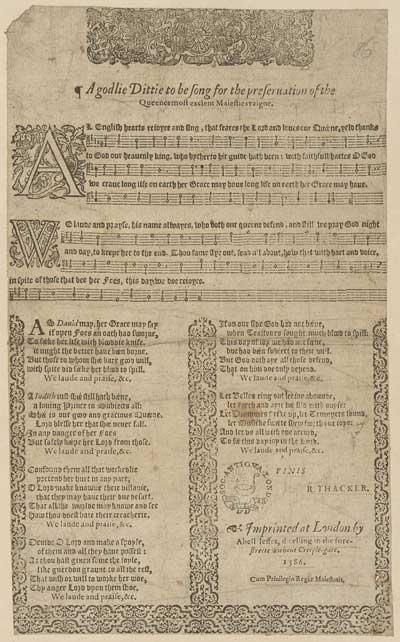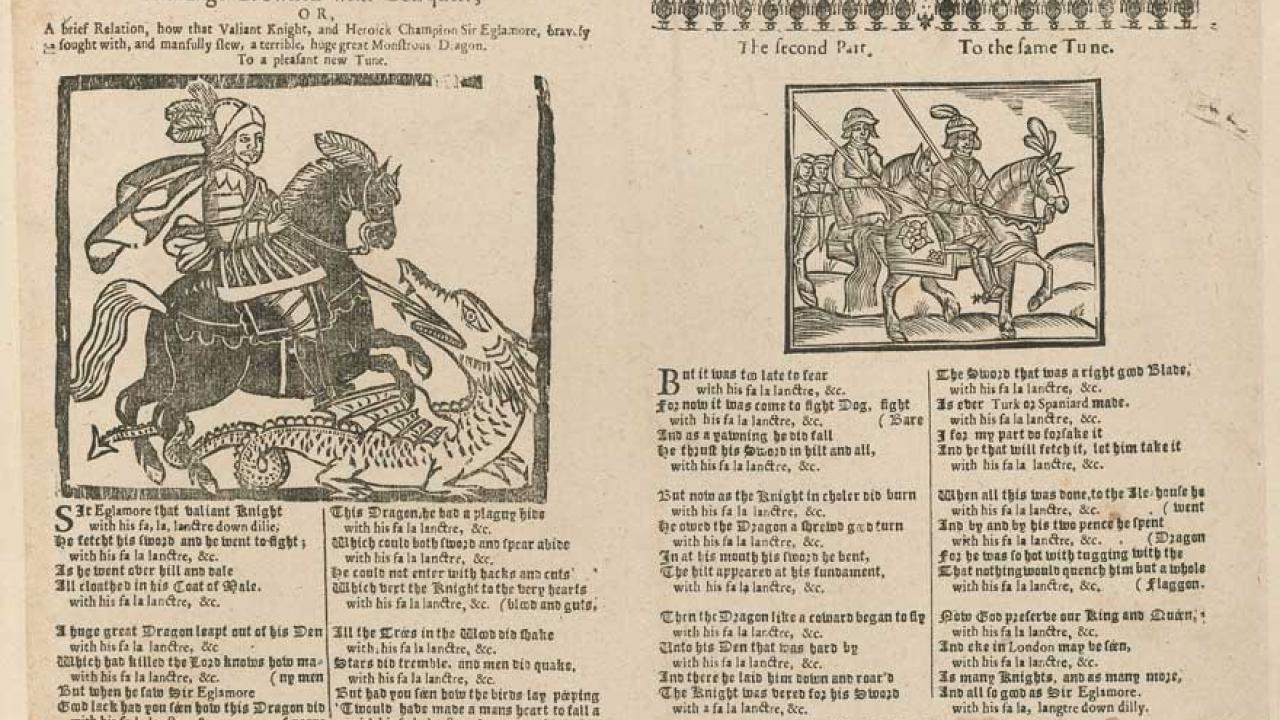Written by Sarah Colwell for the UC Davis Library
Editor's note: See the illustrations that are being digitized and even listen to songs being sung, by clicking on links in the caption, as you move through the images in this article.
The University of California, Davis, Library’s DataLab will be able to complete the digitization of a vast collection of 17th century texts, art, music and cultural records thanks to a National Endowment for the Humanities grant.
The three-year, $360,000 grant from the NEH will support what will be the most comprehensive digital humanities project of its kind in the world.
“This grant really puts UC Davis at the forefront of this work that integrates data science and the humanities,” said Carl Stahmer, executive director of DataLab at the UC Davis Library and co-founder of the English Broadside Ballad Archive, or EBBA, project. “It is true interdisciplinary work.”
Understanding the foundation of humanities
The EBBA project focuses on making English broadside ballads of the 17th century fully accessible as texts, art, music and cultural records. These ballads, which are often referred to as English “street literature or poetry” — or “the memes of their day” — are significant because they authentically capture life at a pivotal time in history.
“They were the newspapers of their time, and sometimes the salacious entertainment, as well. The great works of literature that people typically read from this era only reflect the ideas of a few radical or privileged minds of the time. These ballads are much more representative of what it was like to be a human being living in 17th-century England. — Carl Stahmer
Understanding life in the 17th century matters because it was the dawning of modern-day humanities, according to Stahmer. “All the topics we still care about today were being defined and worked out in that moment” as masses of people moved from farms to cities, he explained.
“A large number of the ideological constructs that influence our lives today were invented in the 17th century,” Stahmer said. “Democracy, the right to privacy, the ideas of gender and race — these are the things that, to this day, define our engagement with the world. Understanding how they came to be gives us the best chance moving forward to understand why we make decisions that we do and why the world works the way it does.”
Labor-intensive project
The EBBA project, which started in 2003, is a UC Davis-UC Santa Barbara partnership supported by a team of 20 to 30 individuals including undergraduate, graduate and post-doctoral students. The project requires a large team because the process for deciphering and archiving these 400-year-old materials is labor intensive. English broadside ballads are written in black-letter print, which is difficult for both humans and computer algorithms to read. As such, every ballad must go through a double-keyed transcription where any disparities are flagged and reviewed by the team of experts. Additionally, many ballads are neither dated nor have an author, so teams must find and research historical markers within the text to establish date ranges on the pieces.
Stahmer and his DataLab team have also built state-of-the-art technology that allows each element of the ballad — text, imagery and music — to be digitized, archived and made accessible through advanced online search functions. This includes the creation of sophisticated image-matching software called Arch-V, or Archive Vision, that can search for and identify images that are similar — though not identical — to one another, a valuable tool given the natural variations in the woodcut images used in broadsides. (Arch-V received major grant funding from the Getty Foundation in 2019; learn more here.)

Leading an international collaboration
A unique aspect of the EBBA project is that neither UC Davis nor UC Santa Barbara own any of the materials in the collection. As such, the project’s success has been completely reliant on collaborations with colleagues and institutions around the globe.
To build the collection, Stahmer and other EBBA team members have had to travel the world in search of ballad collections and then convince the owners of those collections to let the EBBA team digitize and share their collections online. Over the years, the EBBA team has forged partnerships with numerous universities and libraries, including Cambridge University, University of Glasgow, Harvard University, the Library of Scotland, the British Library and the Huntington Library in Pasadena, California. “The global collaboration that EBBA has maintained for a decade and a half remains a model for other projects whose archives are housed across national borders,” said Nadina Gardner, director of the division of preservation and access at NEH.

Unearthing lost elements
The EBBA project has also unearthed several previously lost segments of this important period of English literature.
For example, the EBBA team has captured and recreated the musical elements associated with each ballad. Once a ballad is transcribed, a professional musicologist composes the ballad’s song, which is then performed by Renaissance singers and recorded. The musicologist works with the data scientists to create a MIDI file, or musical data map, that is archived with the broadside, thereby bringing another important dimension of the ballad to life.
In addition, scholars previously thought there were between 6,000 to 7,000 English ballads in existence. The team has discovered and cataloged nearly 10,000 broadside ballads and made them fully accessible online. A few thousand more ballads are yet to be cataloged. The NEH grant will allow these remaining works to be digitized and archived, completing the project. The grant will also support the creation of a new website to make the collection more easily accessible to the public. See the full feature story and additional illustrations here.
Media Contact · Jessica Nusbaum, UC Davis Library, cell 415-548-5377, jlnusbaum@ucdavis.edu
